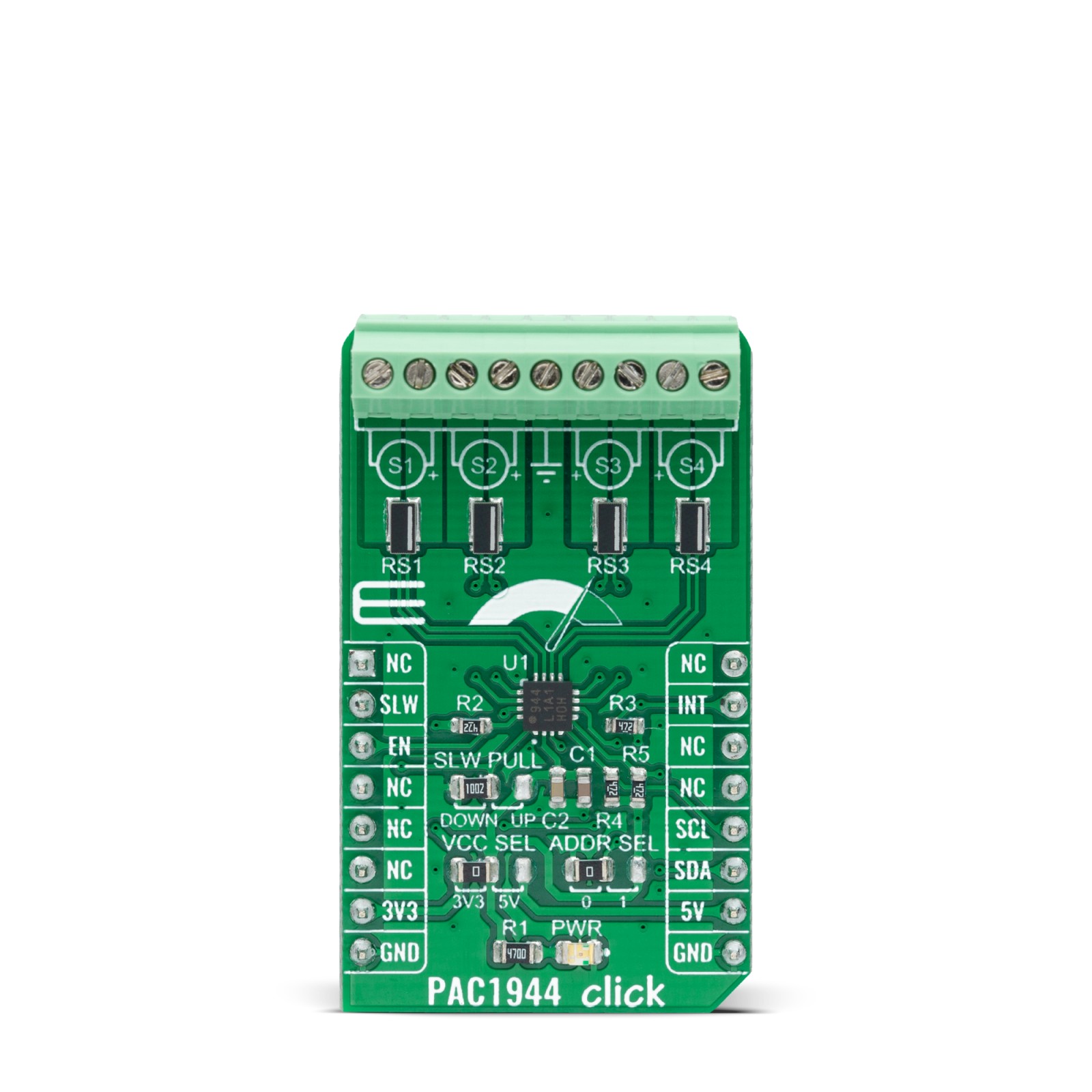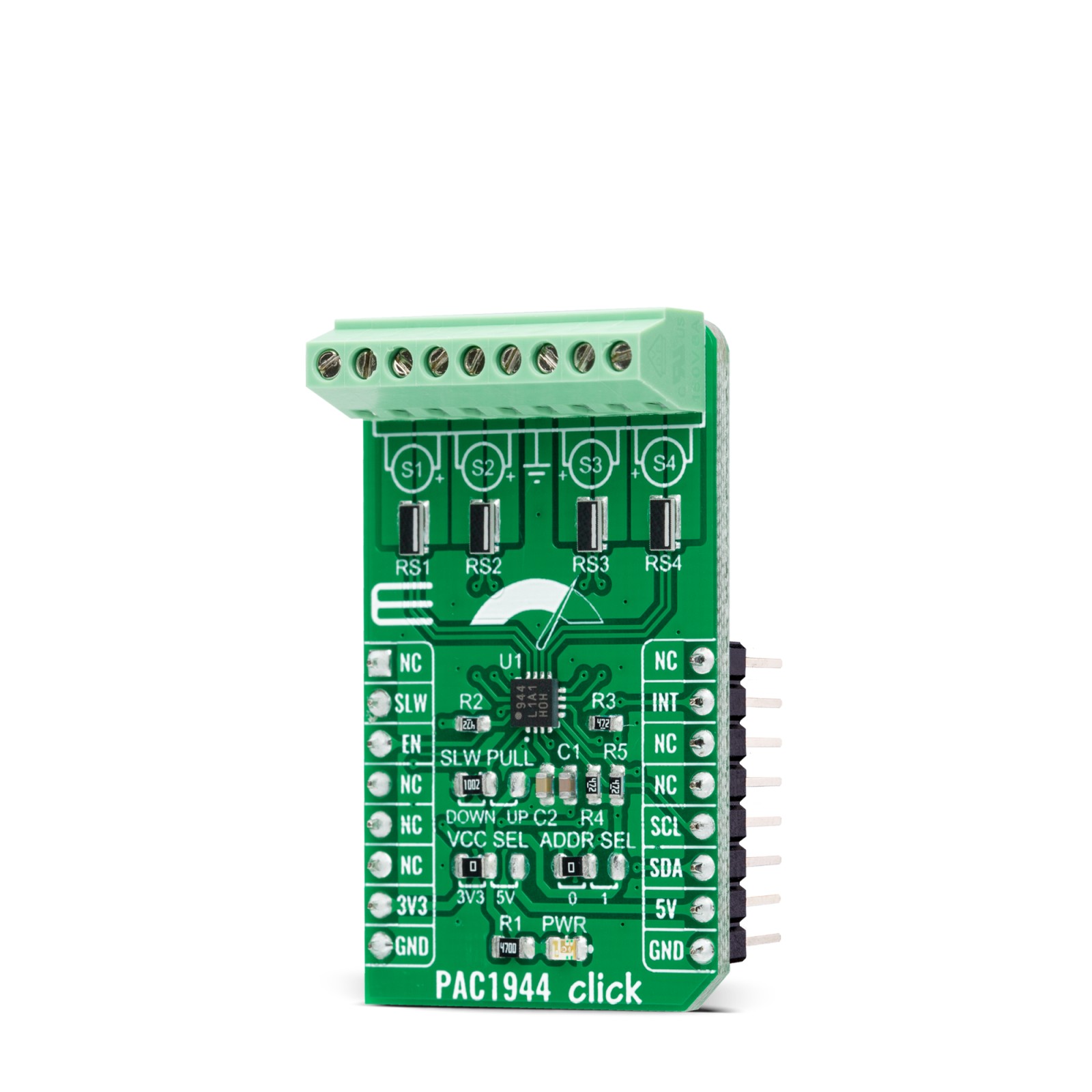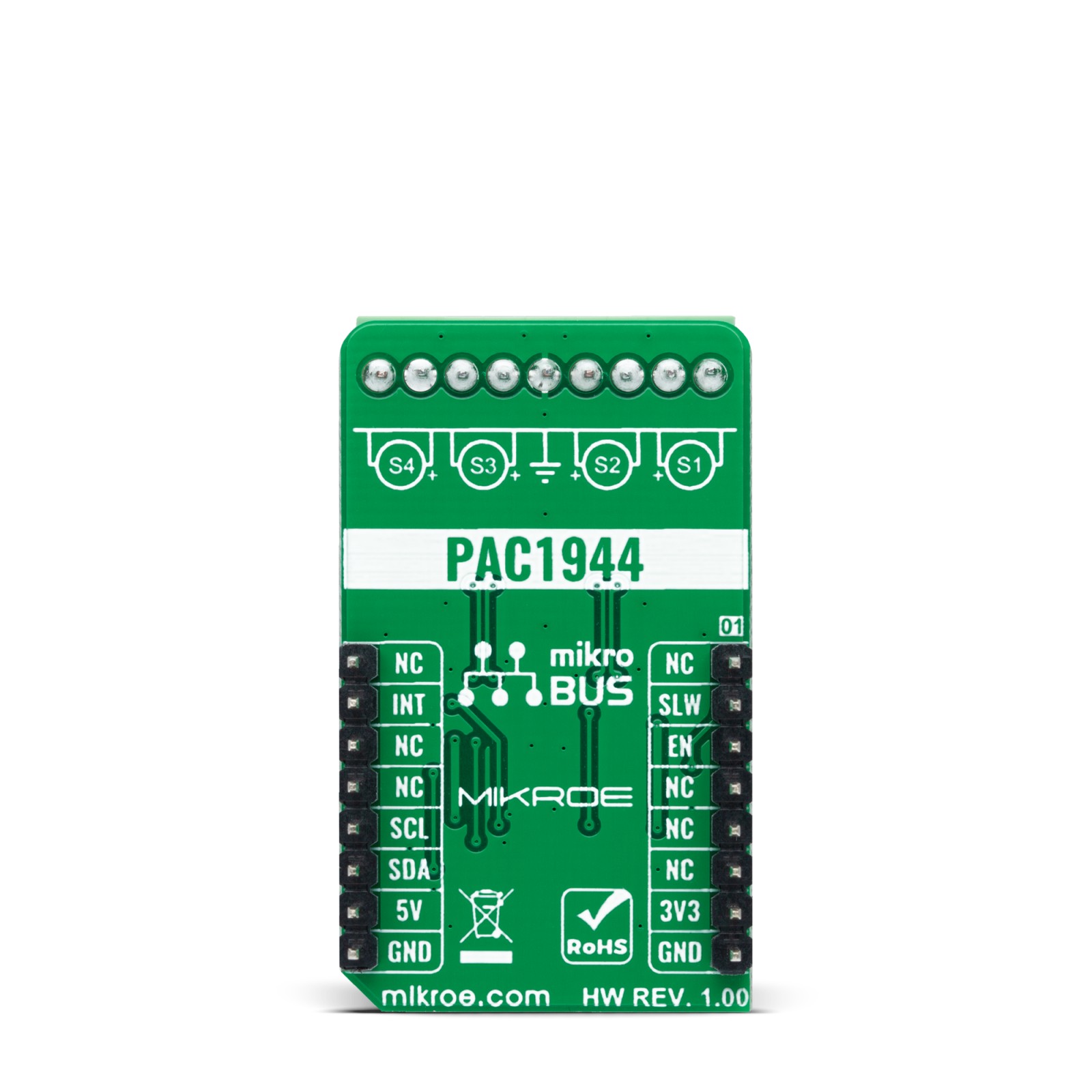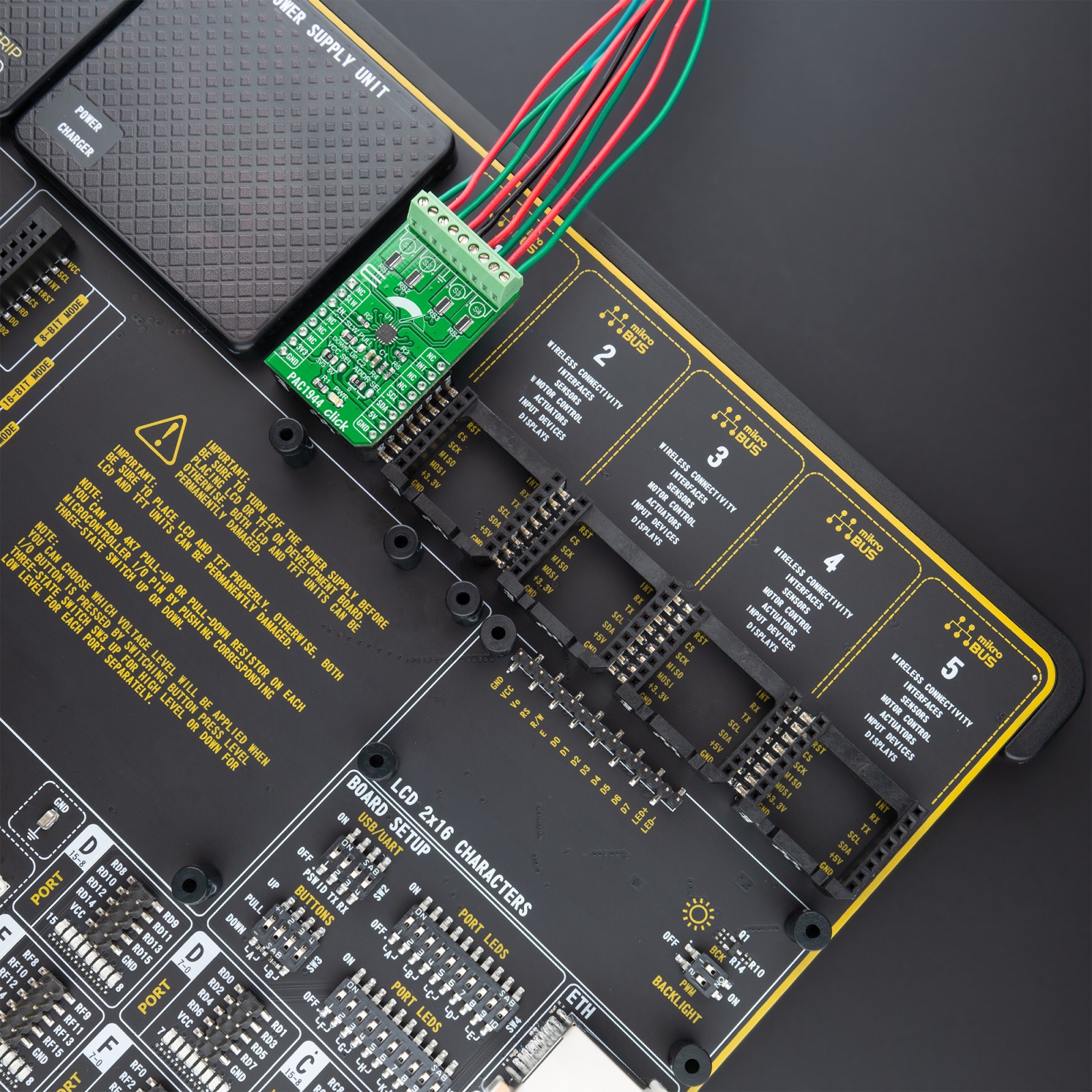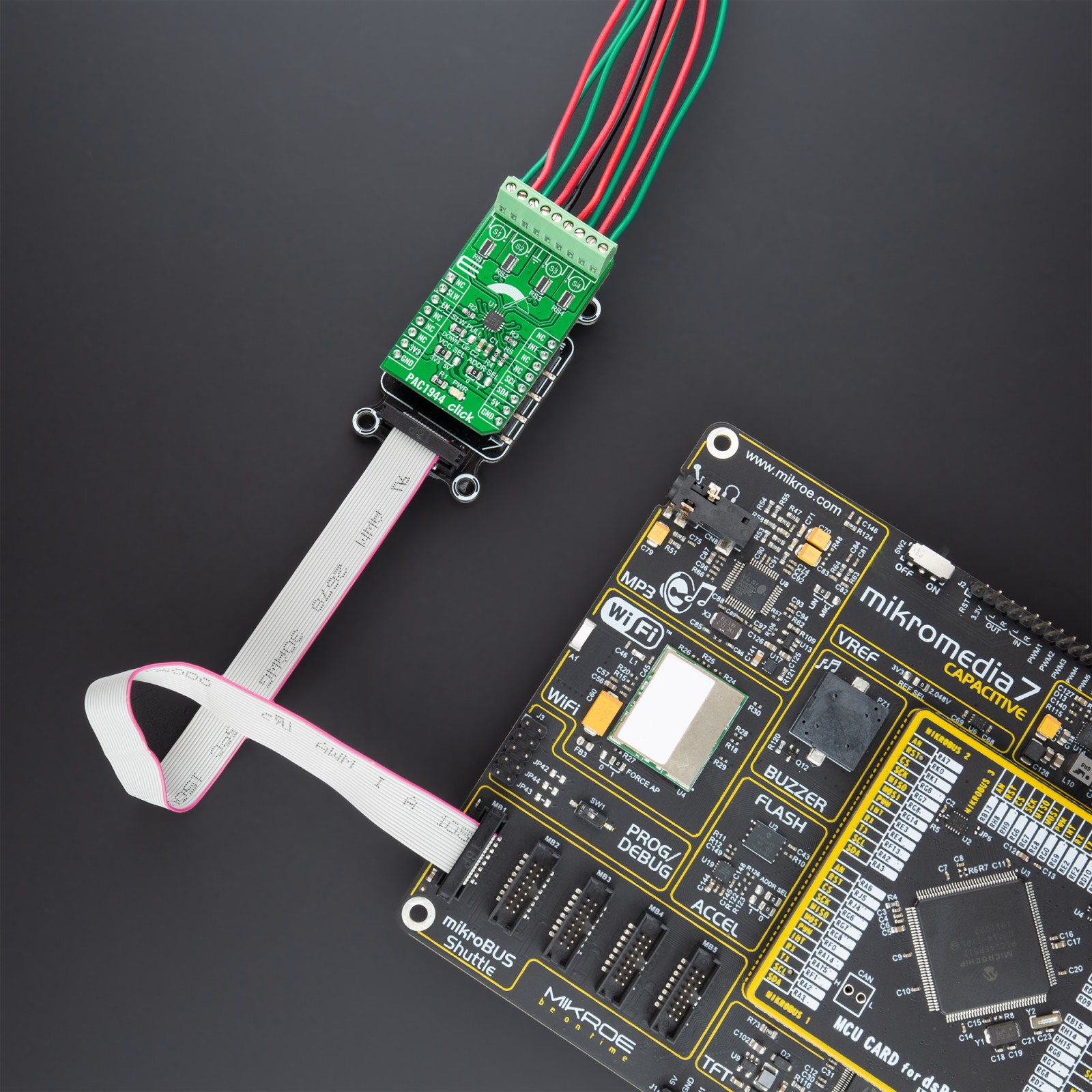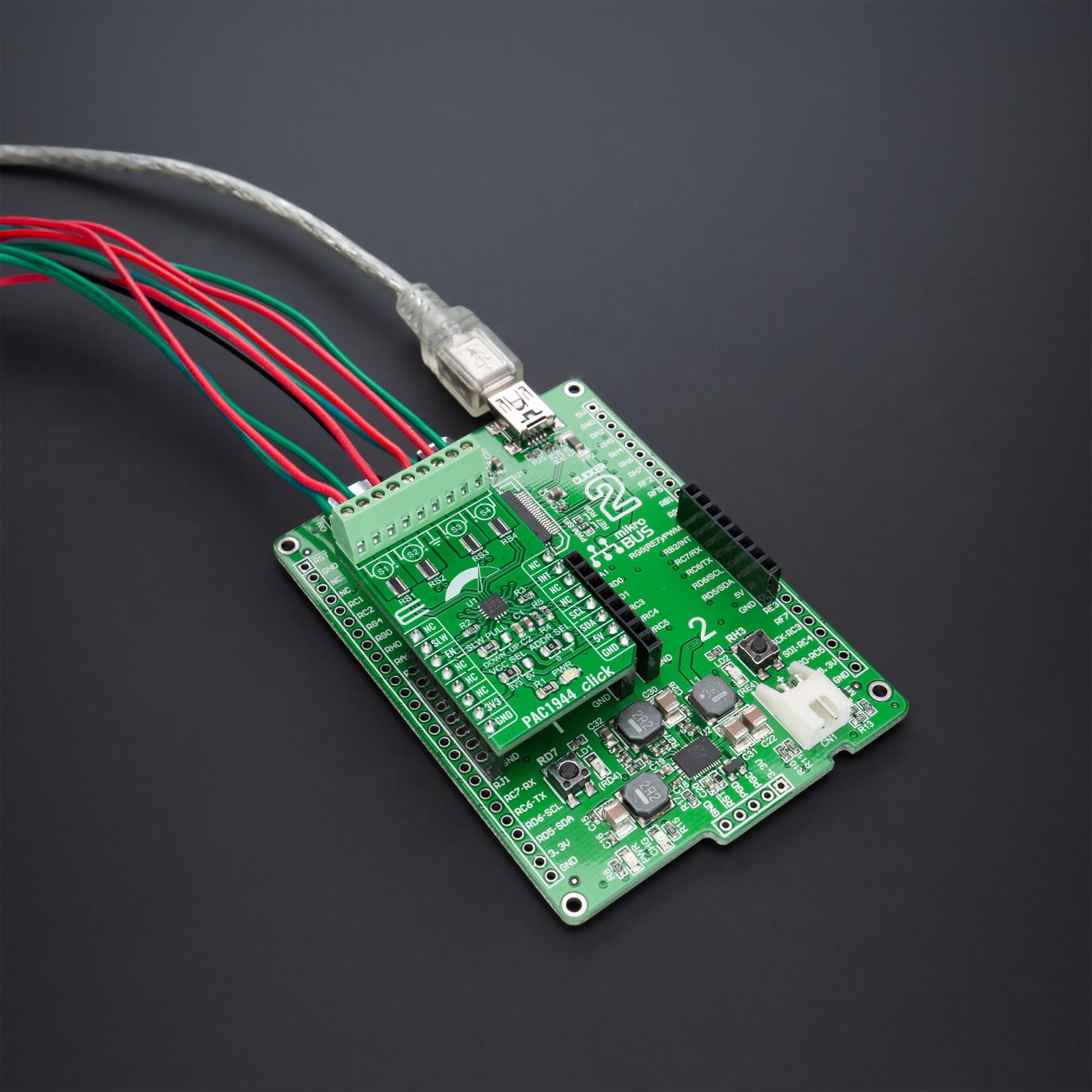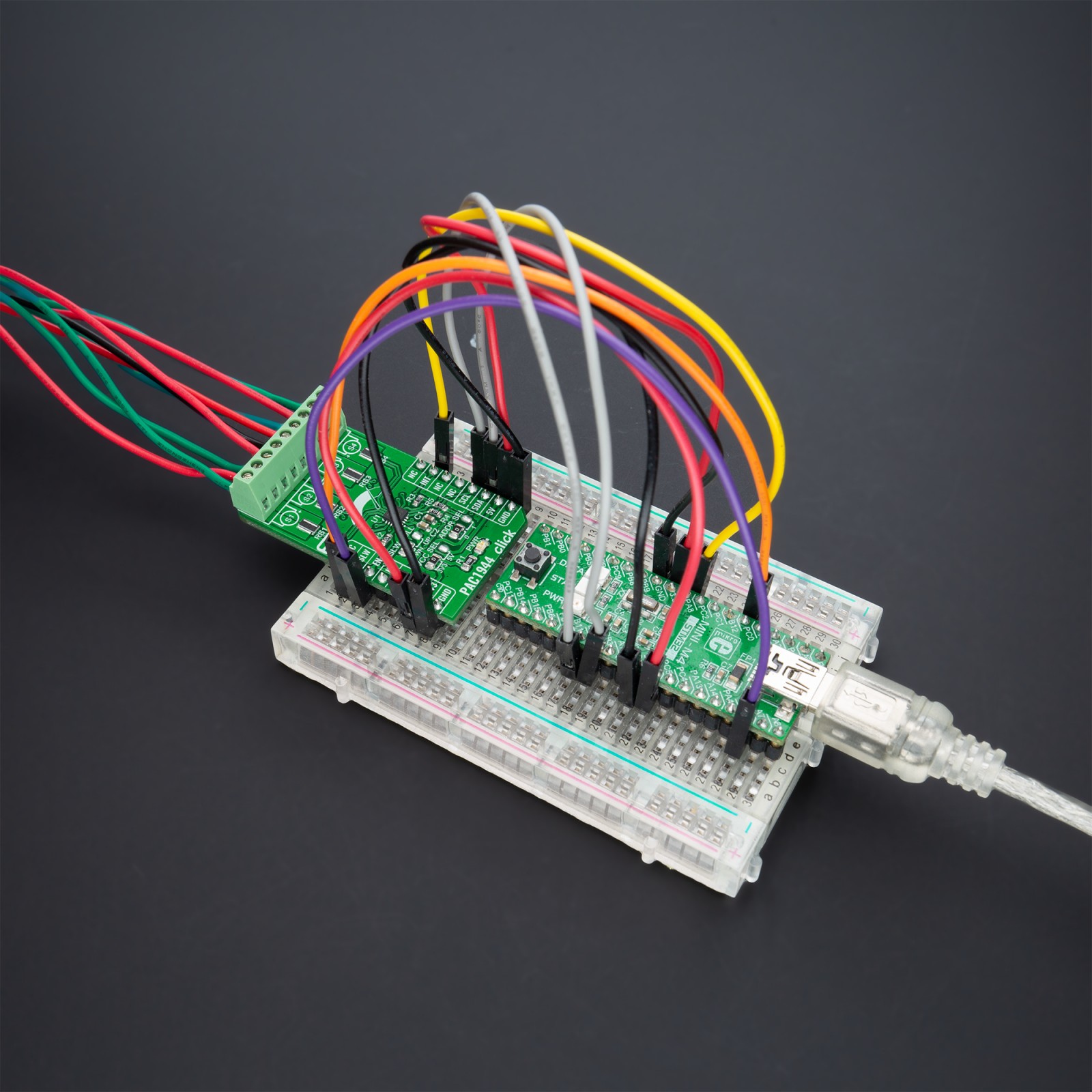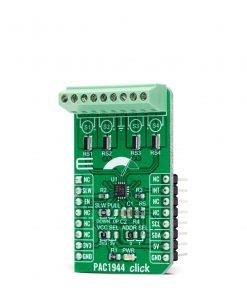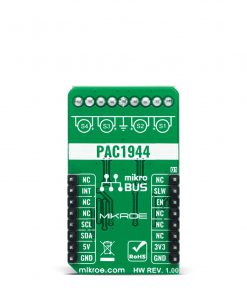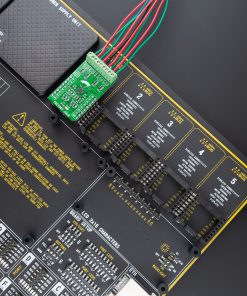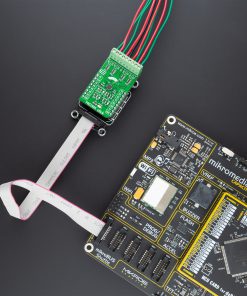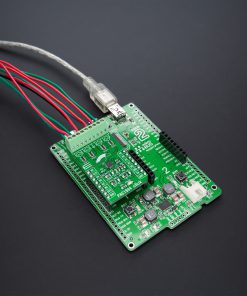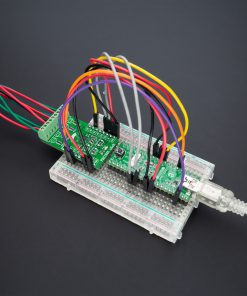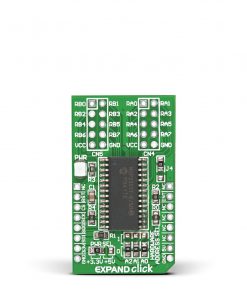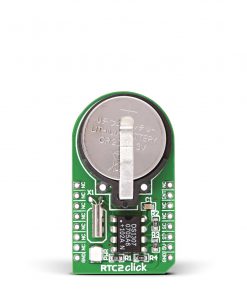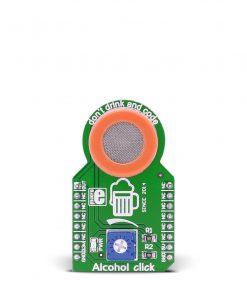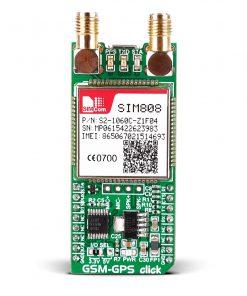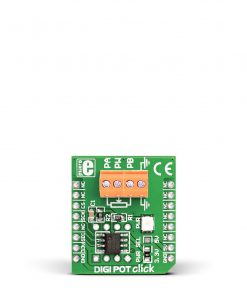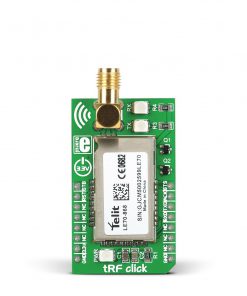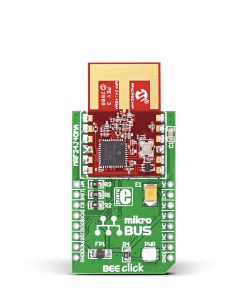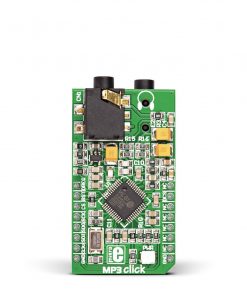PAC1944 Click
R425.00 ex. VAT
PAC1944 Click is a compact add-on board that contains an energy monitoring solution. This board features the PAC1944, a multi-channel DC power/energy monitor from Microchip Technology. It uses real-time calibration to minimize offset and gain errors with no input filters required for this device. One major feature of the PAC1944 design is a set of digital comparators that allows the user to detect over/under voltage, over/undercurrent, and overpower against user-programmed limits for each channel and generate an alert when the threshold is exceeded. This Click board™ performs power calculations and energy accumulation, enabling energy monitoring with integration periods up to one year or longer.
PAC1944 Click is supported by a mikroSDK compliant library, which includes functions that simplify software development. This Click board™ comes as a fully tested product, ready to be used on a system equipped with the mikroBUS™ socket.
Stock: Lead-time applicable.
| 5+ | R403.75 |
| 10+ | R382.50 |
| 15+ | R361.25 |
| 20+ | R347.65 |
How does it work?
PAC1944 Click as its foundation uses the PAC1944, a four-channel, bidirectional, high-side current-sensing solution with precision voltage measurement capabilities, DSP for power calculation and a power accumulator from Microchip Technology. Its real-time calibration minimizes offset and gain errors. There are four current sense shunt resistors connected to PAC1944’s integrated current sense amplifier. Electricity is brought to shunts via screw terminals where the middle screw connector represents GND used for bus voltage monitoring. Bus voltage, sense resistor voltage, and accumulated proportional power are stored in registers for retrieval by the MCU.

One major feature of the PAC1944 design is a set of digital comparators that allows the user to detect over/under voltage, over/undercurrent, and overpower against user-programmed limits for each channel and generate an alert when the threshold is exceeded. Digital circuitry of the PAC1944 performs power calculations and energy accumulation, which enables energy monitoring with integration periods up to one year or longer. After the Start-Up sequence, the PAC1944 is in the Active state and begins sampling the inputs sequentially. Voltage and current are sampled for all active channels at 1024 samples/second by default, and power is calculated and accumulated.
PAC1944 Click communicates with MCU using the standard I2C 2-Wire interface to read data and configure settings, supporting Fast Mode operation with a clock frequency up to 1MHz and High-Speed Mode up to 3.4MHz. Besides, it also allows the choice of the least significant bit of its I2C slave address by positioning the SMD jumper labeled as ADDR SEL to an appropriate position marked as 0 and 1. The Power-Down pin, labeled as EN and routed to the CS pin of the mikroBUS™ socket, optimizes power consumption and is used for power on/off purposes. All circuits, including the interface pins, are inactive in this state, and the PAC1944 is in the form of minimum power dissipation.
The SLW pin, routed to the RST pin of the mikroBUS™ socket, serves as the conversion rate control. If the SLW pin is asserted, the sample rate is eight samples per second. For sampling rates lower than 1024 samples/second, the PAC1944 is in a Sleep mode for a portion of the conversion cycle, which results in lower power dissipation. No matter the programmed sample rate, this new sample rate will affect the following conversion cycle.
The alert functionality, routed to the INT pin of the mikroBUS™ socket, has multiple purposes; to notify the system that a conversion cycle for all active channels is complete, or to notify the system that the accumulator or accumulator count has overflowed, or that an electrical parameter is outside the programmed limit. Besides the INT pin, the SLW pin can function as another alert feature by attaching a pull-up resistor to it, which is done via onboard SMD jumper labeled as SLW PULL by positioning 10k resistor to an appropriate position marked as DOWN or UP.
This Click board™ can operate with both 3.3V and 5V logic voltage levels selected via the VCC SEL jumper. This way, it is allowed for both 3.3V and 5V capable MCUs to use the I2C communication lines properly. However, the Click board™ comes equipped with a library containing easy-to-use functions and an example code that can be used, as a reference, for further development.
Specifications
Type
Measurements
Applications
This Click board™ performs power calculations and energy accumulation, enabling energy monitoring with integration periods up to one year or longer.
On-board modules
PAC1944 – four-channel, bidirectional, high-side current-sensing solution with precision voltage measurement capabilities, DSP for power calculation and a power accumulator from Microchip Technology
Key Features
High-side current monitor, real-time auto-calibration of offset and gain errors for voltage and current, 1% power measurement accuracy over a wide dynamic range, alert feature, and more.
Interface
I2C
Feature
No ClickID
Compatibility
mikroBUS™
Click board size
M (42.9 x 25.4 mm)
Input Voltage
3.3V or 5V
Pinout diagram
This table shows how the pinout on PAC1944 Click corresponds to the pinout on the mikroBUS™ socket (the latter shown in the two middle columns).
Onboard settings and indicators
| Label | Name | Default | Description |
|---|---|---|---|
| LD1 | PWR | – | Power LED Indicator |
| JP1 | VCC SEL | Left | Logic Level Voltage Selection 3V3/5V: Left position 3V3, Right position 5V |
| JP2 | ADDR SEL | Left | I2C Address Selection 0/1: Left position 0, Right position 1 |
| JP3 | SLW SEL | Left | SLW pin ALERT Function Selection DOWN/UP: Left position DOWN, Right position UP |
PAC1944 Click electrical specifications
| Description | Min | Typ | Max | Unit |
|---|---|---|---|---|
| Supply Voltage | 3.3 | – | 5 | V |
| Analog Input Voltage Range | 0 | – | 9 | V |
| ADC Data Resolution | – | – | 16 | bits |
| Operating Temperature Range | -40 | +25 | +125 | °C |
Software Support
We provide a library for the PAC1944 Click as well as a demo application (example), developed using MikroElektronika compilers. The demo can run on all the main MikroElektronika development boards.
Package can be downloaded/installed directly from NECTO Studio Package Manager(recommended way), downloaded from our LibStock™ or found on mikroE github account.
Library Description
This library contains API for PAC1944 Click driver.
Key functions:
void pac1944_cfg_setup ( pac1944_cfg_t *cfg );– Config Object Initialization function.PAC1944_RETVAL pac1944_init ( pac1944_t *ctx, pac1944_cfg_t *cfg );– Initialization function.void pac1944_default_cfg ( pac1944_t *ctx );– Click Default Configuration function.
Examples description
This demo application shows an example of measuring voltage, current and power in a selected part of the circuit. Note that PAC1944 is a high side power monitor, therefore the desired channel should be connected accordingly.
The demo application is composed of two sections :
void application_task ( void ) {
float voltage_sens;
float current_sens;
float power_sens;
pac1944_refresh_cmd( &pac1944 );
voltage_sens = pac1944_get_calc_measurement( &pac1944, PAC1944_MEAS_SEL_V_SOURCE,
PAC1944_CH_SEL_CH_1,
PAC1944_AVG_SEL_ENABLE,
PAC1944_MEAS_MODE_BIPOLAR_FSR );
current_sens = pac1944_get_calc_measurement( &pac1944, PAC1944_MEAS_SEL_I_SENSE,
PAC1944_CH_SEL_CH_1,
PAC1944_AVG_SEL_ENABLE,
PAC1944_MEAS_MODE_BIPOLAR_FSR );
power_sens = pac1944_get_calc_measurement( &pac1944, PAC1944_MEAS_SEL_P_SENSE,
PAC1944_CH_SEL_CH_1,
PAC1944_AVG_SEL_ENABLE,
PAC1944_MEAS_MODE_BIPOLAR_FSR );
log_printf( &logger, " Voltage : %.6f V rn", voltage_sens );
log_printf( &logger, " Current : %.6f A rn", current_sens );
log_printf( &logger, " Power : %.6f W rn", power_sens );
log_printf( &logger, "-----------------------------rn" );
Delay_ms( 2000 );
}
The full application code, and ready to use projects can be installed directly from NECTO Studio Package Manager(recommended way), downloaded from our LibStock™ or found on mikroE github account.
Other mikroE Libraries used in the example:
- MikroSDK.Board
- MikroSDK.Log
- Click.PAC1944
Additional notes and informations
Depending on the development board you are using, you may need USB UART click, USB UART 2 click or RS232 click to connect to your PC, for development systems with no UART to USB interface available on the board. The terminal available in all MikroElektronika compilers, or any other terminal application of your choice, can be used to read the message.
mikroSDK
This Click board™ is supported with mikroSDK – MikroElektronika Software Development Kit. To ensure proper operation of mikroSDK compliant Click board™ demo applications, mikroSDK should be downloaded from the LibStock and installed for the compiler you are using.
For more information about mikroSDK, visit the official page.
Resources
Downloads
| Weight | 20 g |
|---|---|
| Brand | MikroElektronika |

